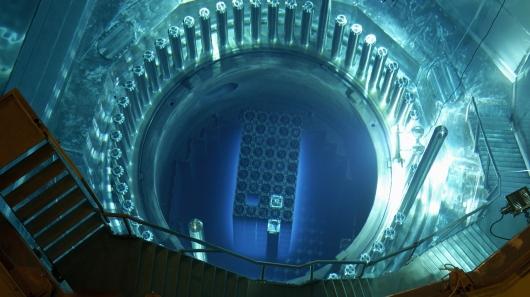The discovery of the neutron was a harbinger of the atomic era of mankind, since in the hands of physicists was a particle that, due to the lack of charge, could penetrate into any, even heavy, nuclei. In the experiments on neutron bombardment of uranium nuclei conducted by the Italian physicist E. Fermi, radioactive isotopes and transuranium elements - neptunium and plutonium - were obtained. Thus, it became possible to create a nuclear reactor - an installation that surpasses in its energy power everything that was previously created by mankind.

A nuclear reactor is an apparatus where a controlled nuclear decay reaction takes place, based on a chain principle. This principle is as follows. Uranium nuclei bombarded by neutrons decay and form several new neutrons, which, in turn, cause fission of the following nuclei. With this process, the number of neutrons increases rapidly. The ratio of the number of neutrons in one phase of fission to the number of neutrons of the previous phase of nuclear decay is called the multiplication factor.
For a nuclear reaction to be controlled, an atomic reactor is needed, which is used at nuclear power plants, submarines, nuclear icebreakers, in experimental nuclear installations, etc. An uncontrolled nuclear reaction inevitably leads to an explosion of tremendous destructive force. This type of chain reaction is used exclusively in nuclear bombs, the explosion of which is the goal of nuclear decay.
A nuclear reactor in which released neutrons travel at great speed is equipped with special materials that absorb part of the energy of elementary particles to control the reaction. Such materials, which have the ability to reduce speed and reduce the inertia of the motion of neutrons, are called moderators of a nuclear reaction.
The principle of operation of a nuclear reactor is as follows. The internal cavity of the reactor is filled with distilled water circulating inside special tubes. A nuclear reactor automatically turns on when graphite rods are absorbed from the core, absorbing part of the neutron energy. With the beginning of the chain reaction, a tremendous amount of thermal energy is released, which, circulating in the reactor core, reaches the fuel cells. In this case, the water is heated to a temperature of 320 about C.
Then the water of the first circuit, moving inside through the tubes of the steam generator, gives off the thermal energy received from the reactor core to the water of the second circuit, without contacting it, which eliminates the ingress of radioactive particles outside the reactor hall.
The further process is no different from what is happening at any thermal power plant - the water of the second circuit, which has turned into steam, gives rotation to the turbines. And turbines activate giant electric generators that generate electrical energy.
A nuclear reactor is not a purely human invention. Since the same laws of physics apply throughout the Universe, the energy of nuclear decay is necessary to maintain the harmonious structure of space and life on Earth. Natural natural nuclear reactors are stars. And one of them is the Sun, which with its energy of thermonuclear fusion created all the conditions for the origin of life on our planet.